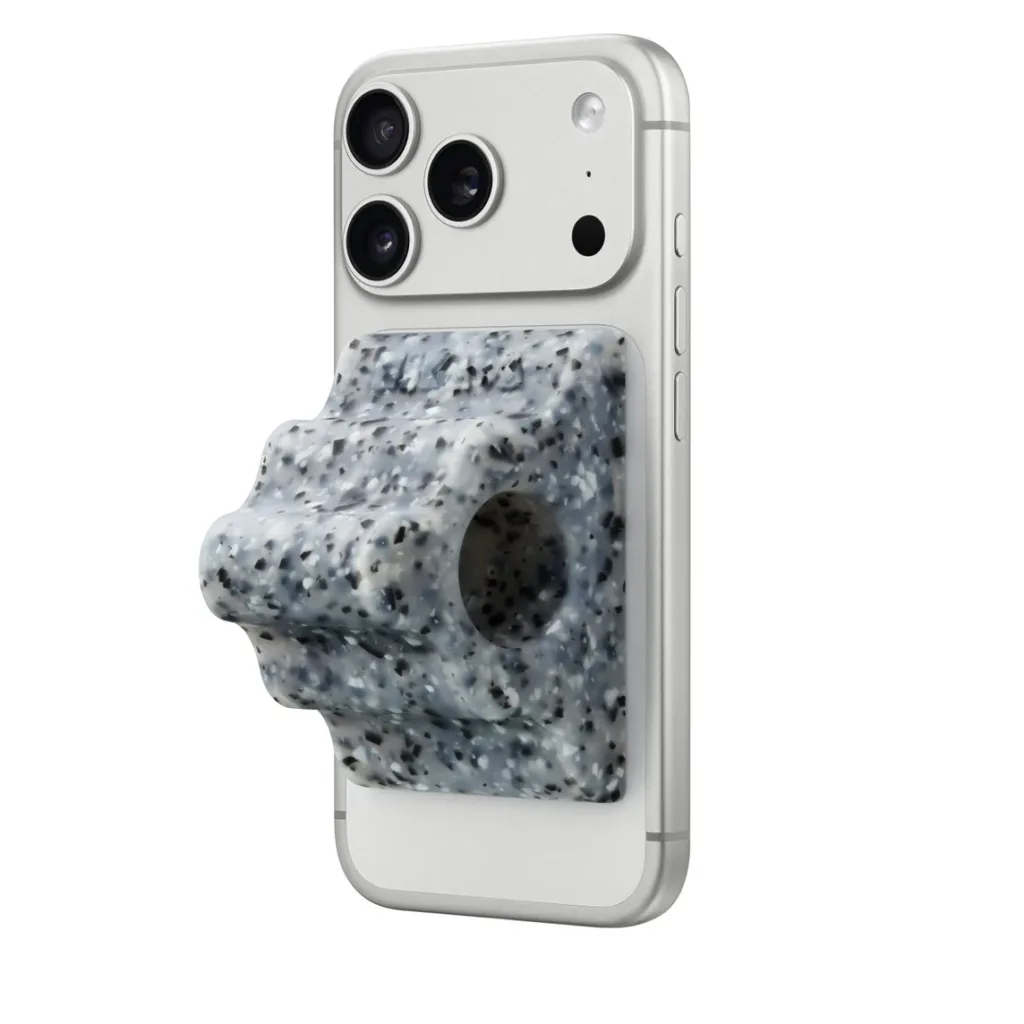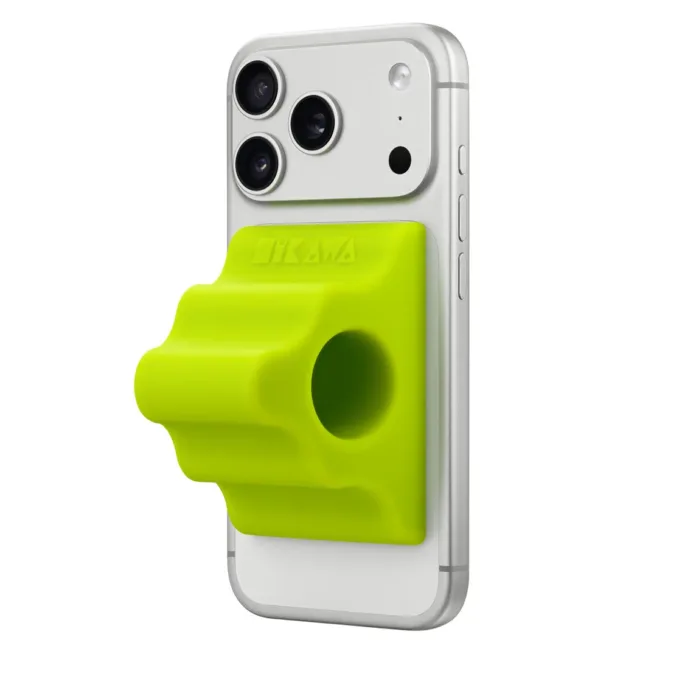Table of Contents
Apple has introduced a remarkable accessory that aims to reshape how users with different abilities interact with their iPhones. The new limited edition iPhone grip, created in partnership with artist and designer Bailey Hikawa, stands out as a clear example of accessibility-driven innovation. SquaredTech takes an in-depth look at this product and explores why it matters beyond simply being a new phone grip.
Read More About Our Article of Apple Launches iPhone Pocket: A Unique Limited Edition iPod Sock-Style Accessory with ISSEY MIYAKE Published on November 12th, 2025 SquaredTech
Accessibility at the Core of Apple’s Limited Edition iPhone Grip

Apple’s latest iPhone grip is not just a decorative gadget. The $69.95 Hikawa Phone Grip & Stand focuses squarely on improving how users hold and use their iPhones. It is available through the Apple Store in exclusive “limited edition” colors, including Brat green and a speckled stone finish, both manufactured using soft-touch silicone for comfortable handling.
What makes this grip truly innovative is its development process. Apple collaborated closely with Bailey Hikawa, who incorporated feedback from individuals with disabilities affecting muscle strength, dexterity, and hand control. This cooperation ensured that the product addresses real challenges faced by a wide range of users who struggle with maintaining a steady hold on their phones.
The grip attaches magnetically via MagSafe, allowing it to snap firmly onto iPhones. It doubles as a functional stand, offering horizontal or vertical positioning. This versatile design supports diverse ways of holding the device, which helps reduce the effort required to use a smartphone comfortably. In this way, it enhances both accessibility and convenience in one product.
Bailey Hikawa’s Design Philosophy and Contribution

Bailey Hikawa is an artist known for combining aesthetic appeal with structural function. Based in Los Angeles, Hikawa runs a studio producing chunky, architectural phone cases and other unique design pieces, including decorative toilet seats. Hikawa’s work strikes a balance between playful creativity and practical usability.
On the artist’s website, Hikawa clarifies that this grip is part of a broader approach to adaptive design. While it is thoughtfully engineered to accommodate various physical needs, it cannot meet every adaptive requirement alone. This honesty underlines a realistic understanding of inclusivity — no one-size-fits-all solution exists.
Hikawa has expressed profound satisfaction that users have found the grip helpful and comfortable. Interviewed by Elle Decor, the artist shared how users often say they feel a new sense of ease and joy when using the grip. This response inspires hopes for future adaptive products that embrace “all kinds of bodies,” promoting inclusiveness in everyday tech accessories.
How Apple Celebrates Four Decades of Accessibility Efforts
This phone grip also marks the 40th anniversary of Apple’s ongoing dedication to accessibility. For decades, Apple has worked to create products and experiences that support people with disabilities.
The Hikawa Phone Grip & Stand is Apple’s second recent accessory partnership emphasizing design and function. Just weeks before, Apple collaborated with the fashion house Issey Miyake to release a knitted crossbody iPhone case. These partnerships showcase Apple’s commitment to blending high-quality design with meaningful accessibility features, offering a new dimension to how users can personalize and utilize their devices.
SquaredTech recognizes that Apple’s approach reflects a mature strategy to make technology inclusive. It highlights the importance of listening to and collaborating with end-users, particularly those whose needs have been historically overlooked. This grip is one step in a broader movement towards designing devices and accessories that truly serve all users.
We appreciate how Apple’s limited edition iPhone grip sets a new standard by focusing on accessibility through thoughtful design and genuine partnership with people who have disabilities. This product not only offers a functional enhancement but also symbolizes a shift toward technology that embraces diversity in user abilities. With Apple leading the charge, the future of phone accessories looks more inclusive, helping everyone interact with technology on their own terms.


